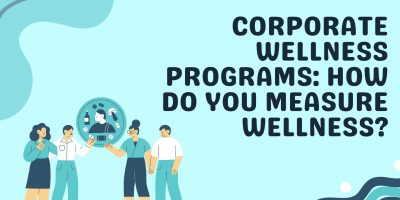
Why are Wellness Programs Important for Employees?
Embrace employee wellness programs’ significance in employee health and wellbeing.


ACC, SHRM-SCP, CEO of LeadWell Company

Founder, CEO of The New Workforce

Benefits Consultant at Bukaty Companies

Editor Manager at Biz Report

Co-Founder and Managing Director at Bravo Benefits

HR specialist & the Managing Director of First Aid Course Leicester
Over the last year, companies ventured into the uncharted waters of AI tools, dealt with mounting cost pressures, and navigated a plethora of disengagement workforce trends set against a backdrop of geopolitical tension, marking yet another turbulent year.
Heading into 2024, the greatest risk business leaders will face in this era of perpetual change is the risk of inaction.
Failing to anticipate and prepare for the widespread ripple effect these shifts will have on the employee benefits landscape could be a critical misstep.
Our “Workplace Wellness Trends Report for 2024” offers vital insights into these evolving trends.
As Shortlister works closely with all partners involved in the wellness ecosystem, this broad spectrum of partnerships allows us to provide a panoramic view of the changing landscape of workplace wellness.
In this year’s report, data has been captured across the Shortlister platform over three years (2021-2023) to provide a holistic view of the employee benefits behaviors and engagement in 2024.
The conclusions drawn are based on primary data generated from the 6,500 HR, wellness, and benefits vendors in our network, as well as secondary market trend analysis, published research, and expert insights.
Over the last two decades, the benefits space has transformed, shifting from traditional offerings like disease management to a more holistic focus on wellness.
With the pandemic worsening employees’ physical, mental, and financial well-being, it became evident that a one-size-fits-all benefits design was no longer sufficient.
Andrea J Miller, ACC, SHRM-SCP, CEO of LeadWell Company, emphasizes this transition, noting, “In the evolving world of workplace wellness, there’s been a clear move towards more holistic, employee-centric strategies.”
A new post-pandemic benefit culture emerged centered around supporting unique employee needs by expanding the scope of offerings to include hyper-personalized solutions.
Today, most benefits portfolios are a mix of mainstream benefits and standalone point solutions to address diverse needs and attract top talent.
Kraig Kleeman, Founder and CEO of The New Workforce, highlights the current state by sharing, “Right now, there are loads of tools to tackle specific health issues, and that’s great. But what we need is for all these tools to talk to each other and give us a complete picture of our health.”
He further explains, “The future looks like a mix of all these excellent solutions, focusing on stopping health issues before they start and looking at our well-being from every angle.”
As we move into the following year, the imperative for leaders is clear: integration of these diverse offerings to unlock the full potential of their employee wellness programs and support their workforce in a meaningful way.
The turmoil and unparalleled stressors of the last few years have created a need for improved and diverse mental health support.
While traditional Employee Assistance Programs (EAPs) have long been a cornerstone of employee mental well-being, many employees haven’t fully tapped into the power of EAPs due to a lack of awareness or understanding of the benefits they offer.
However, exciting developments are making them more accessible and effective than ever.
Our latest data shows a subtle decrease in EAP popularity compared to the past. This might be attributed to a market shift towards more diverse mental health resources.
In line with these trends, over two-thirds of surveyed employers have reported enhancing their EAP services, with a significant majority, 59%, finding these enhancements to be effective or very effective.
Employers are adding more free counseling sessions, broadening the scope of services, and making these programs more visible and accessible.
Despite the ebb and flow of their popularity and the emergence of alternative solutions, it is unlikely that EAPs will ever become obsolete.

Related Content: Humana Work Life & EAP: 14 Alternatives for Consumers
Depression rates reached an all-time high in 2023, leaving employees struggling with stress, burnout, and addiction. This mental health crisis isn’t just impacting individuals – it’s driving up healthcare costs at double the rate of other illnesses.
The pandemic sparked a demand for behavioral health benefits as employees coped with change, isolation, and grief. Although our data indicates a slight decrease in popularity, it’s likely due to market fluctuations rather than fading interest.
The good news is that mental health stigma is lessening, and employers are recognizing behavioral health as a corporate priority.
As Kraig Kleeman puts it, “Companies are catching on that they must do more to keep their folks mentally fit. We’re talking about making therapy sessions easy, giving people days off to chill, and teaching managers how to spot when someone’s struggling.”
According to one survey, enhancing access to behavioral health care is now a top priority for the next 3-5 years among the nation’s largest employers.
In response to the ongoing shortage of behavioral health professionals, employers are expanding offerings by deploying virtual care solutions, screening for mental health and addictions, and training managers to recognize behavioral health issues to support employees better.

The workforce of 2024 is a fusion of diversity, encompassing four generations, varying literacy levels, multiple languages, globally dispersed, and with varying abilities. These complexities and evolving employee expectations are causing a shift in how employers approach employee well–being.
Our data shows that interest in wellness platforms is decreasing, but the core desire to support employee well-being still remains strong.
Employers are increasingly tailoring their benefit plans to address the specific needs and challenges of their workforce, which may not always align with the offerings of existing wellness platforms.
The broader trend is that companies today aim to integrate wellness into the fabric of the workplace and the daily experiences of employees rather than treating wellness as an isolated activity or program.
Mounting cost pressures are also influencing this shift.
As shown in Sapient’s HR Systems Survey, 29% of organizations already offer a wellness platform, while 22% are actively assessing their needs.
In 2024, we expect corporate wellness platforms to see a lot of movement and continuous focus on holistic solutions, personalization, and seamless integration with everyday work.

In 2024, businesses will prioritize streamlined efficiency through all-in-one HCM/HRIS/HRMS platforms, driving integrated talent management and cost savings.
Despite a slow-down in the perceived ‘buzz’ around HR tech, its utilization remains consistent.
The numbers suggest a maturing market where functionality and employee value take precedence over novelty. For these reasons, it’s crucial to consider the bigger picture and longer-term trends in the HR tech landscape.
As reported in Sapient’s HR Systems Survey, the average year of ownership for HRMS suites is 6.2 years, showing a tendency to stick with their chosen solutions for a considerable time.
In addition, over 21% of companies now opt to purchase their HR and finance applications as part of a single solution, up from 17% in the previous year. This indicates a strategic move towards integrating different organizational functions into one.

The recent proliferation of specialized point solutions in the benefits market means that employers must work with an increasing number of vendors.
PWC’s report shows that 25% of employers of all sizes work with over 20 different vendors, while the rest work with at least eight to ten vendors across their health and wellness portfolio.
As a result, companies are rethinking their approach to benefits communication, implementing automation solutions, and improving employee access.
Shortlister’s findings reveal a fluctuating trend in the benefits administration category, with a slight decline in recent years.
However, as employers feel the complexities of working with different vendors, they may turn to benefit administration solutions to manage their benefits programs effectively.
In line with these trends, industry data shows that 69% of HR professionals plan to invest more in digital platforms to support benefits administration over the next three years.
We believe streamlining and automating the administration process is a vital step to overcoming vendor fragmentation challenges and creating a more integrated benefits ecosystem.

While employers carefully tailor their employee benefits plans, these programs will add little value if employees don’t understand or use them.
As the amount of benefit-related information, choices, add-on tools, and self-service administration increases, a single point of entry – a benefit navigation platform – can help employees navigate their benefits and provide a positive employee experience.
Despite their potential to simplify complex benefits, the interest in benefits navigation platforms has been plateauing. The effectiveness of these platforms might depend on factors like user-friendliness, personalization, and integration with existing HR systems.
In reviewing existing trends, one central theme is the demand for increasing access to appropriate benefits and creating consistency in how employees use and interact with them.
When we consider that as much as 40% of employees had difficulty accessing available benefits through some technology, according to a 2022 Mercer Marsh Benefits survey, the need for benefits navigation becomes more evident.
Over the next three years, 58% of HR professionals intend to provide a clear starting point to help employees use their chosen benefits when needed by investing in benefits platforms.

Trauma, arthritis, and back pain are the three most common musculoskeletal conditions affecting nearly one in two adults.
Musculoskeletal disorders and back pain are conditions that are consistently reported as the leading cause of short-term disability in the United States, meaning they are also the top cost driver for medical expenses.
Shortlister data indicates a trend in the importance of addressing ergonomics issues in the workplace as the occurrence and severity of musculoskeletal conditions rise.
There was a significant increase in focus on these conditions from 2021 to 2022, followed by a slight downtick over the next year.
Industry trends further support this prediction.
A survey from Fidelity Investments forecasts that musculoskeletal programs will be the fastest-growing initiatives in 2024, with an expected increase in such programs by 14%.
Another research by Mercer shows that virtual care solutions, particularly for specific conditions like musculoskeletal disorders, are increasingly being offered or planned for 2024.

America’s weight crisis is reaching a tipping point.
Over 70% of the population is overweight or obese, putting them at risk for a cascading list of chronic diseases. In the coming year, the weight management field will experience many changes, particularly with the emergence of the novelty GLP-1 weight-loss drugs.
Our data shows an increase in the popularity of weight management initiatives, identifying it as a top trend.
Attitudes in the United States are shifting towards a general acknowledgment that obesity is more than just a lifestyle issue. Addressing long-standing weight challenges with new advanced therapies will be in the spotlight for the year ahead.
Mercer’s recent research indicates that less than half of large employers currently cover the new generation of obesity drugs. Still, an additional 18% are considering adding them to their prescription drug coverage.
As new research, treatments, and breakthroughs come to the forefront, it’s important to remember that making meaningful changes requires a guided approach with sustainable lifestyle modifications.

A growing number of companies are turning to fun and engaging health challenges in the quest for a healthier workforce. These initiatives tackle the physical aspect of wellness by motivating employees to get active, embrace healthy habits, and build camaraderie.
Additionally, incentives and gamification elements can drive positive peer pressure and build a sense of community among employees.
Brian Mankameyer, a benefits consultant at Bukaty Companies, shares a similar sentiment, predicting that gamification will be the ‘next trend’ in workplace wellness, further solidifying the importance of these engaging initiatives.
The latest findings from Shortlister reveal a steady trend, with no significant changes over the years.
Physical activity, which decreased at the onset of the pandemic, has shown a remarkable recovery.
From 2020 to 2022, there was a 14.3% annual growth in the physical activity sector, now standing at 111% of its 2019 level.
Ultimately, research predicts that in 2024, 98% of American companies will channel their wellness strategies toward physical health, recognizing its direct impact on employee engagement and overall productivity.

Nowadays, for many employees, gyms represent a “third place,” a place beyond work and home where they can gather, relax, and network. In other words, they value the convenience, flexibility, and social aspects of in-person workouts that gym networks provide.
Our research indicates that the demand for gym networks as an employee benefit remains steady with no changes.
Despite the pandemic-related closures of some gyms and the transition towards online fitness platforms, the demand for brick-and-mortar gym facilities is unchanged.
The gym network industry has continued to evolve and adapt by introducing technology-enabled solutions, such as mobile apps for booking classes, tracking progress, and offering personalized and specialized workouts, catering to the convenience preferences of modern consumers.

The closure of gyms and fitness centers during the pandemic meant that many employers turned to on-demand fitness apps as an alternative for maintaining employee health and wellness.
By offering app-based fitness services that fit employees’ schedules and preferences, companies can cater to the diverse physical needs of their workforce.
Although the demand for digital fitness content may have peaked during the pandemic, our data still shows an increase in the popularity of these apps.
Research from the Global Wellness Insitute shows that fitness participation rates grew from 2019 to 2022, mainly due to the rise of on-demand fitness content.
Since then, the convenience and flexibility offered by on-demand fitness content have persisted, establishing them as a trending benefit in the health and wellness sector for the years to come.

Sleep, circadian rhythms, and wake cycles – are often misunderstood and overlooked dimensions of wellness.
For too long, the importance of quality sleep has been underestimated in the corporate world. But with over 43% of employees chronically sleep-deprived, that’s quickly changing.
Shortlister data points to an increase in the popularity of corporate sleep programs from 2021 to 2023, and industry trends echo this shift.
In 2022, nearly half of employers (47%) offered sleep improvement programs as a way to support overall mental health.
However, it’s more than just employers who want to improve sleep hygiene.
Nearly half of consumers prioritize better sleep, second only to overall health, and a quarter plan to actively invest in their sleep within the next few years.

Related Content: The Link Between Work Productivity and Sleep
While societal stigmas and financial struggles are common barriers in fertility journeys, progressive companies are stepping up to support employees navigating this critical part of life.
The data we’ve gathered reveals a dynamic trend in this sector.
We observed a significant rise in interest in infertility & egg-freezing services during 2022, followed by a decline in the current year.
However, this could be due to legislative changes that may have caused temporary operational challenges, leading to a pause in expansion.
Family-building benefits have become a way for companies to strategically match benefits to diversity, equity, and inclusion goals.
As Kraig Kleeman explains, “With everyone trying to make workplaces fairer and more welcoming, expect benefits celebrating all kinds of families and backgrounds.”
Research backs this, with reports that 66% of employers now offer fertility benefits for all family types, with an additional 9% expanding these benefits in the next year.
In addition, Mercer’s report shows that two-fifths of companies embrace inclusive models, extending coverage beyond the traditional “infertility diagnosis” requirement.

Related Content: Does Your Insurance Cover Freezing Eggs?
Six out of ten American workers struggle to balance childcare and work, making caregiving the second most significant reason for workforce departures.
Because of this, companies are expanding family-focused offerings like subsidies, backup childcare, and even on-site childcare to help workers reach a better work-life balance.
Shortlister data shows childcare services as the employee benefit experiencing the highest year-on-year increase in importance and popularity.
A trend that signals childcare is moving away from a fringe benefit to a mainstream necessity for attracting and retaining top talent.
Industry trends echo this, with half of employers offering family-oriented benefits like childcare subsidies and online resources. Among large companies, access to backup childcare services (37%), childcare subsidies (16%), and even on-site childcare (10%) are now becoming the new norm.
As the need for childcare remains unwavering, in 2024, we expect to see increased employer investment in this area.

Maternal mortality is declining in all high-income countries – except the US.
At the forefront of employers’ benefit agendas is the need to address the critical gaps in maternity care, postpartum challenges, and the silent struggles of returning parents.
Shortlister findings point to a dramatically increasing interest in offering maternity benefits, as this benefit saw a consecutive increase from 2021 to now.
The maternity care trend is reflected in the fact that almost a quarter of employers now offer coverage for doulas, midwives, birth centers, and other pregnancy care.
According to Bank of America’s report, 27% of employers plan on implementing programs and benefits that specifically support women.
In 2024, women’s health will be in the spotlight, as many employers are looking to expand their services to support the unique health needs of women throughout the whole reproductive journey – from preconception to lactation facilities and menopause support.

Related Content: Postpartum Depression & Going Back to Work
Innovative care delivery models are bringing value to employees and employers alike – and not only in the behavioral healthcare segment.
In cases where primary care doesn’t require comprehensive assessment and intervention, it can be easily offered in a virtual setting. While virtual care has the potential to remove barriers and improve health equity, adoption of these services is still vastly underutilized.
Although telehealth services emerged as a transformative solution during the pandemic, a dip in the demand for these services is to be expected, and our data reflects that.
The convenience and accessibility of telehealth is indisputable.
Yet, virtual care is adopted at a slower rate in lower-income areas, possibly due to a technology gap and a lack of providers offering virtual care options.
As much as 50 million in-person visits could be converted to virtual care, showcasing the potential expansion this field holds.
Industry trends show that many employers will be looking to expand or add a supplemental provider network for virtual care, helping employees gain better access to care.
Young Pham, Editor Manager at Biz Report, shares the immense value of these benefits, “Telemedicine will play a crucial role in allowing employees to access healthcare services while working or within a work environment. This not only promotes well-being but also productivity by reducing the time employees need to take off for medical appointments.”

With the rise of personalized and diverse benefit packages, employees today have more options tailored to their needs than ever before.
While this is a positive development, it also can cause “decision fatigue” and make it challenging for employees to make crucial decisions regarding their benefits.
Despite the fact that Shortlister’s data shows a dip in interest in decision support tools this year compared to the increase in previous years, the initial growth trajectory is a strong indicator of their enduring value.
Health illiteracy and confusion are still very prevalent among employees and have not improved over the last five years.
In fact, reports show that 85% of employees are still confused about their benefits.
As a result, there is an escalating need for employee assistance with benefits selection and helping them find the most suitable packages.

The healthcare ecosystem is increasingly complex and siloed, requiring many patients to rely on care coordinators, advocates, and clinical navigators to access high-quality benefits and programs.
Over the years, employers have recognized the pressing need to improve coordination across settings of care, specialties, and employer benefit programs to create a seamless experience and improve health outcomes.
While our monitoring of clinical navigation is a recent initiative, our data already indicates a positive tick in demand for care coordination benefits.
Market analysis reveals employers want to connect employees with the right healthcare services and providers to impact their health journey positively.
Nearly a third (28%) of large employers, and up to 46% of those with over 20,000 employees, are implementing navigation services to guide their workforce.
Research by insurance firm Brown & Brown further highlights this demand, showing that 44% of employers require navigation partners to have provider directories to ensure access to qualified and cost-effective care.
Notably, 28% of these employers plan to implement this strategy in 2024, indicating a continued rise in the adoption of navigation services.

Delayed access to care during the pandemic and missed screenings have led to a higher prevalence in the number of late-stage cancers.
Currently, cancer is the top driver of healthcare costs and is the leading cause of long-term disability in the United States. Moreover, the crippling financial toxicity of a cancer diagnosis can significantly affect a person’s mental health, financial standing, and health outcomes.
Shortlister’s findings reveal a dynamic landscape for cancer insurance benefits, with an initial increase followed by a period of adjustment.
We see this as a natural part of the market’s embrace of this significant benefit and expect it to play an increasingly important role in the years ahead.
Over 40% of employers anticipate a rise in late-stage cancers, as 13% already face its impact. This trend highlights a pressing need for employers to help reduce employees’ economic burdens, prioritize cancer prevention, introduce early detection programs, and increase their efforts in patient navigation to reduce costs and improve employee well–being.

The rising tide of diabetes and prediabetes in the US workforce is forcing employers to reassess their healthcare strategies and look for innovative solutions.
For employees with this condition, early diagnosis and management of their HbA1c levels have a direct impact on the disease progression and health care cost.
Diabetes benefits have gained significant traction in recent years, reaching a high point in 2022. While there was a decrease in 2023, we believe this is a temporary blip in an otherwise positive trajectory.
Diabetes is emerging as a major concern for employers, with PWC’s survey revealing it as the leading contributor to healthcare costs.
Understanding healthcare costs and utilization trends within the workforce can help employers decide on current and future coverage, as well as any prior authorization criteria for GLP-1 medications.

In recent years, small and medium-sized employers have increasingly joined their larger counterparts in setting up on-site or near-site employer health clinics to provide primary care for their employees.
Our data reveals an increase in the popularity of employer-sponsored health clinics, suggesting a growing recognition of their value.
Similar trends were observed in the industry, as Mercer’s National Survey shows a steady rise in employer health clinic prevalence among large companies, from 20% in 2010 to 31% in 2021.
Likewise, KFF’s 2023 Employer Health Benefits Survey reveals that 20% of mid-sized companies offer clinics, compared to 30% or higher for larger companies.
While the gap in clinic adoption between mid-sized and large companies remains, the rise in popularity among mid-sized firms suggests a potential for rapid growth in the near future.

Disease management programs (DMPs) are gaining traction as employers seek to optimize employee health and control chronic condition healthcare costs.
Our data confirms this trend, showing an upward trajectory in the adoption of chronic condition programs. This trend aligns with industry forecasts, suggesting a growing focus on disease management in 2024.
While cancer often receives the most attention, 41% of employers expect to see higher needs for disease management across various chronic conditions in the future.
As much as 36% of small and 64% of large firms offer DMPs, showcasing the program’s growing popularity.

Related Content: How to Accommodate Employees with Chronic Illness in the Workplace?
A large part of the workforce comes down with the flu each fall, majorly impacting business operations.
Business owners are taking preventative steps by arranging workplace flu vaccinations and minimizing the effects of seasonal influenza.
According to Shortlister’s data, flu vaccine offerings saw a rise in demand, solidifying this benefit’s position as a definitive trend for 2024.
The CDC estimates that the seasonal flu costs employers billions of dollars in lost days off work, morale, and medical claims.
In 2024, the broader health movement will be one where employers are increasing preventative care across all diseases, including influenza, to ensure a healthier workforce.

For many, the journey to optimal health is confusing and filled with a lot of conflicting information.
In this wave of mixed messages, health coaching can cut through the noise and deliver a health strategy that accounts for employees’ circumstances and considers the wider social determinants of health (SDOH) of their environment.
Shortlister data reveals an increase in the demand for these benefits in previous years, and this trend is expected to continue in 2024.
This industry trend is supported by findings from the 2023 Employee Benefit Research Institute and Greenwald Research in their Workplace Wellness Surveys.
According to the report, one in four employees reported being offered health coaching services.
Interestingly, among those without access to a health coach, two-thirds showed interest in such services, further positioning this benefit as a must-have for 2024.

As flexibility and customization take center stage, lifestyle spending accounts (LSA) are gaining popularity as an added benefit.
Giving employees the freedom to reimburse a variety of life-enhancing expenses can help address any gaps in wellness offerings. At the same time, tackle issues of point solution overload.
Wojciech Dochan, Co-Founder and Managing Director at Bravo Benefits, notes that “Few companies can afford every point solution to provide a fully comprehensive care package,” further emphasizing the practicality of LSAs.
Shortlister data reveals a significant year-on-year increase in lifestyle spending accounts demand, with a surge from 2021 to 2023.
The growing popularity of LSAs highlights their potential to become a mainstream employee benefit in the coming years.
Market data shows that a small number (10%) of employers offer lifestyle accounts today, but a staggering 70% of them have plans to include an LSA in their benefits package for 2024.
Another study reveals a significant shift in employer attitudes towards LSAs.
While only 8% of employers incorporated LSAs into their benefits package last year, a striking 43% are considering implementing them in the upcoming year.

Caregiving no longer encompasses only childcare and has expanded to include the needs of aging seniors.
More than half of the employees today – primarily Millennials and Gen Z – are working caregivers responsible for their elderly family members, putting a strain on their finances and time.
While our data shows a decline in interest in senior care benefits over the past year, their demand is expected to rise as the number of working caregivers increases. Neglecting to invest now sends a troubling message of employers’ commitment to understand and support employee needs.
Broader industry data shows a similarly worrying disconnect, where employers believe only 35% of their workers are caregivers, but in reality, 56% of employees identify as caregivers. Yet, many employees don’t have access to this benefit, as EBRI and Greenwald’s survey shows that only 12% of employees are offered elder care assistance.
In 2024, leaders must reconsider their leave and benefits policies to encompass an expanded definition of caregiving and invest in solutions that alleviate the pressure on working caregivers.

Related Content: The State of Senior Care: Infographic
Ignoring early warning signs of high blood pressure, cholesterol, or glucose puts employee’s health at risk and eventually increases healthcare costs for employers.
As much as 75% of these costs can be attributed to preventable chronic health conditions, making early detection with biometric screenings a corporate priority.
Shorlister findings indicate a decreased demand for biometric screenings.
However, as the financial burden of chronic diseases and late-stage conditions rises, we believe that there will be a renewed interest in prevention using biometric screenings.
Industry expert Wojciech Dochan explains, “As the workforce ages, I expect to see a greater emphasis on benefits that work to prevent poor health, such as health screening and diagnostics.”
Data from the industry reflects a similar trend to our findings.
KFF’s research shows that 15% of small companies and 42% of large ones provide biometric screenings to workers. However, these percentages are still lower than the pre-pandemic levels of 2019, suggesting a waning interest.
As shown in AON’s Global Medical Trend Rates report, a lack of screening is listed as one of the most critical risk factors for driving future claims. Therefore, employers must step up their efforts by prioritizing and incentivizing prevention and introducing expanded biometric screening options.

Millions of families cherish their furry, feathery, or scaly companions.
As the cost of routine, preventative, and specialty animal care dramatically rises, more families are interested in pet insurance protection, and more employers are recognizing the value of including it in their perks lineup.
While pet insurance is relatively new in the fringe benefits category, it has already shown impressive growth.
Our data shows a significant demand in 2023, suggesting this benefit and other pet-friendly initiatives are here to stay.
In SHRM’s Employee Benefits Survey, pet insurance was featured as part of the “New and Notable In 2023” category.
In other findings, nearly 64% of employers now offer employee-paid pet insurance, while 3% of employers cover the cost of pet insurance.
The latest trends of pet-friendly workplaces and “bring your pet to work” days further highlight the growing recognition of pets as valued members, even in corporate settings.

The dramatic COVID-driven increase in benefit investments over the last two to three years has been evidenced by many sources. At Shortlister, we have witnessed a similar remarkable expansion in product demand and closed deals over the years.
After a steady 2021, there was an exceptional increase in 2022, pushing the deal volume to its highest point and surpassing the previous year’s figures by a significant margin.
While 2023 showed a slight contraction from that peak, it is apparent that a natural stabilization is taking hold.
When it comes to product popularity, wellness solutions reign supreme.
Benefits like wellness platforms, EAPs, behavioral health programs, and biometric screenings are now established features of well-being strategies, and we see the most closed deals on our platform.
Similar trends are witnessed across the industry, with mental health being the primary focus for most employers (77%) for 2024.
Expert Young Pham states, “Holistic wellness programs, addressing not only physical health but also mental, emotional, and financial well-being, will become more prevalent.”
Mercer’s report shows that nearly two-thirds (64%) of employers plan on enhancing their health and wellness offerings to meet employee needs better, and over a quarter have already done so in the past two years.
As compared to the spending pandemic highs, future investments may decline due to budget constraints. However, it’s unlikely that benefit offerings and strategy will ever be a C-suite afterthought.
Sarah Jeffries, HR specialist and the Managing Director of First Aid Course Leicester, speaks of the strategic nature of these challenges.
“Balancing cost-effectiveness and employee satisfaction, HR specialists strategically craft a benefits package to align with the company’s objectives; external dynamics guide these decisions,“ she explains.
The nature of what employees want is constantly shifting, meaning employers must continually assess how they approach wellness in the workplace.
We now have an expanded definition of wellness, encompassing dimensions like social connectedness, financial health, support networks, and environmental concerns.
In the end, many of this year’s challenges will persist in the future, and knowing the comprehensive picture of the market can help leaders shape their benefit approach for the following year.
Senior Content Writer at Shortlister
Browse our curated list of vendors to find the best solution for your needs.
Subscribe to our newsletter for the latest trends, expert tips, and workplace insights!

Embrace employee wellness programs’ significance in employee health and wellbeing.

How do you know if your wellness plan is cost-effective and working out for you? How can you measure employee well-being?

Discover practical strategies and actionable steps to promote employee well-being and productivity. Create a workplace environment that prioritizes health and fosters a thriving, engaged workforce.

Promoting workers’ health and well-being is beneficial for both employees and organizations. Discover invigorating fitness challenges tailored for your corporate environments.
Shortlister Connect is a tool specifically designed to be utilized by the HR and Procurement/Sourcing teams within mid-size, large and jumbo employers. Shortlister Connect allows these teams to efficiently research & identify their optimal vendor partners, track existing vendor relationships & performance and “connect” with other employers to share successes and vendor experiences.
If you are not on the HR or Procurement/Sourcing team within an employer with over 200 employees, you will not be granted access to Connect. Examples of individuals that would not be granted access include, but are not limited to: vendors, students, practitioners, researchers, other non-employers or anyone that is unwilling to identify themselves will not pass our vetting criteria. If you are a consultant, Shortlister offers a specialized product for consultants, called Shortlister Select. You can email Tom Ciccotti at tciccotti@myshortlister.com to learn more about Shortlister Select.
***Shortlister retains the exclusive right to grant or deny access to any party to ensure the privacy of the vendors in our system.
Please login with your LinkedIn Credentials
Used by most of the top employee benefits consultants in the US, Shortlister is where you can find, research and select HR and benefits vendors for your clients.
Shortlister helps you reach your ideal prospects. Claim your free account to control your message and receive employer, consultant and health plan leads.